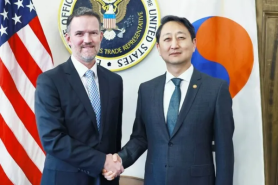
The meeting, held via conference call and chaired by Vice Finance Minister Yoon In-dae, came two days after Moody’s Investors Service lowered the U.S. long-term issuer rating to Aa1 from Aaa. The outlook was simultaneously revised from negative to stable.
Moody’s said the downgrade reflects “the increase over more than a decade in government debt and interest payment ratios to levels that are significantly higher than similarly rated sovereigns.”
However, the agency emphasized that the United States “retains exceptional credit strengths such as size, resilience and dynamism and the continued role of the U.S. dollar as the global reserve currency.”
South Korean officials characterized the move as a delayed realignment with other major ratings firms.
Fitch Ratings cut the U.S. rating in August 2023, and S&P Global Ratings downgraded the country in 2011.
In Washington, the White House dismissed the downgrade, attributing it to fiscal mismanagement under the previous administration.
“If Moody’s had any credibility, they would not have stayed silent as the fiscal disaster of the past four years unfolded,” said spokesperson Kush Desai.
While Seoul’s response was measured, officials acknowledged that the downgrade could exacerbate short-term volatility, especially amid ongoing uncertainties tied to U.S. trade policy.
The Ministry of Finance pledged to maintain close oversight of global and domestic markets through its regular meeting on macroeconomic and financial issues, known as F4.
Copyright ⓒ Aju Press All rights reserved.




